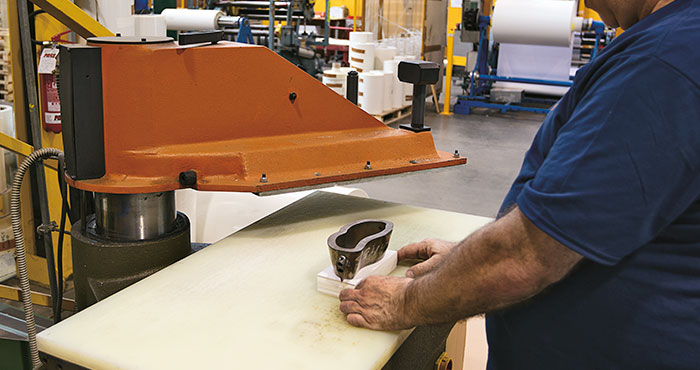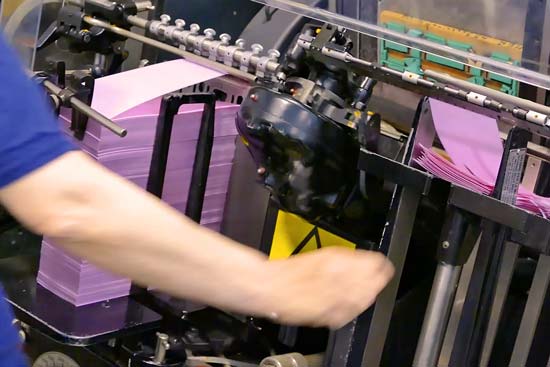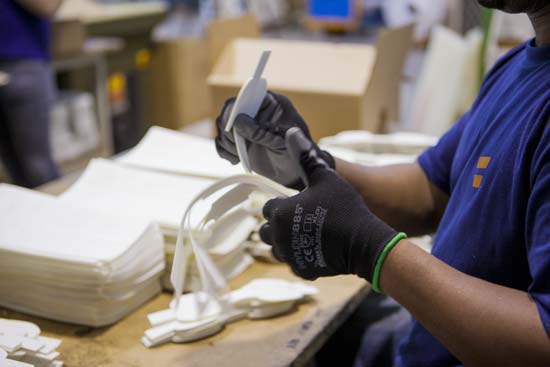
Ultrasonic Welding



Among the processes available at Filmcutter is the ultrasonic welding of plastic material. In particular, the company has equipment capable of welding together two edges of material by melting them in the area affected by the process.
This allows for the creation of pieces that are otherwise difficult to obtain with other techniques, such as tubes or caps. The most commonly used materials are polyester-based laminates or single PET film.
Ultrasonic welding is an innovative and highly efficient joining technique used in a wide range of industrial sectors to join thermoplastic materials. This process exploits the energy generated by ultrasound, i.e., high-frequency sound waves above the audible range of the human ear, to produce heat and melt the surfaces of the materials to be welded. Once melted, the surfaces are pressed together to form a strong and durable weld. This technique is widely used in sectors such as the automotive industry, electronics, packaging, medical industry, and many other industrial applications where precise, fast, and high-quality welding is required.
Main Benefits
One of the main advantages is its ability to produce high-quality welds quickly and efficiently. This process is extremely fast, with cycle times typically in the order of seconds, making it ideal for high-volume production. Additionally, ultrasonic welding offers uniform and homogeneous welding without the need for filler materials or additional chemicals, reducing costs and improving overall production process efficiency.
Another significant advantage is its versatility. This process can be used to weld a wide range of thermoplastic materials, including polymers, polyethylene, polypropylene, ABS, PVC, and many others. This versatility makes it suitable for a wide range of industrial applications, from automotive component production to medical device manufacturing and electronic devices.
Furthermore, it is a very clean and environmentally friendly process. It does not require the use of solvents or chemical adhesives, minimizing environmental impact and eliminating the risk of harmful emissions. Additionally, since the process produces only heat and does not generate fumes or slag, it is also safe for operators and can be easily integrated into industrial work environments.
Why choose this process
Another distinctive feature of ultrasonic welding is its ability to produce high-strength and durable welds. The welds created with this process are usually stronger than the base material itself, ensuring a robust and reliable connection between the welded parts. This strength and durability make them suitable for applications where high mechanical safety and stability are required, such as in the automotive and aerospace sectors.
Another advantage is its precision. This process allows precise control of the amount of heat and pressure applied during welding, ensuring a precise and uniform connection between parts. This precision is essential to ensure the quality and reliability of welds, especially in applications where tight tolerances or complex geometries are required.
Finally, ultrasonic welding also offers greater design flexibility. Since the process does not require the use of fasteners or welding points, it allows for the design of lighter, more compact, and aesthetically pleasing components. This design flexibility enables engineers to develop innovative solutions and optimize their product designs to maximize performance and reduce production costs.
In conclusion, ultrasonic welding is an innovative and highly efficient joining technique used in a wide range of industrial sectors. With its ability to produce high-quality welds quickly, efficiently, and precisely, this process offers numerous advantages, including versatility, cleanliness, strength, and durability. With increasing demand for advanced and sustainable manufacturing solutions, it continues to emerge as a key technology for the future of manufacturing.

